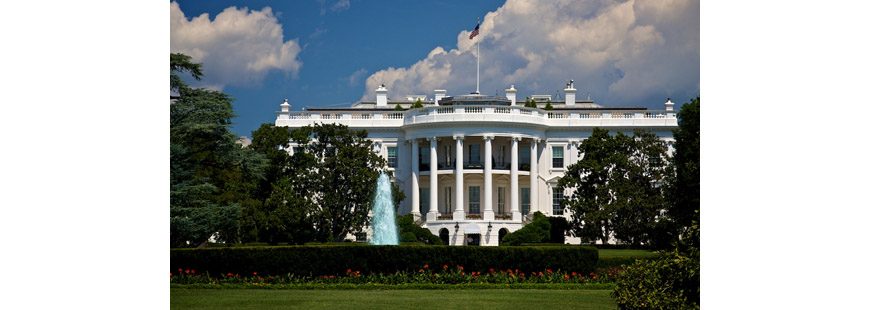President Biden’s recent Executive Order on Tackling the Climate Crisis at Home and Abroad is a welcome sea change when it comes to addressing this increasingly urgent global challenge.
As President Biden’s fact sheet notes, his administration’s actions will address climate change while, “creating good-paying union jobs and equitable clean energy future, building modern and sustainable infrastructure, restoring scientific integrity and evidence-based policymaking across the federal government, and re-establishing the President’s Council of Advisors on Science and Technology.”
While the entire suite of executive actions is both encouraging and important, one area that garnered significant attention along the waterfront is the initiative to conserve 30 percent of the country’s lands and waters, including federally managed oceans, by 2030. The effort has been dubbed “30×30” by proponents and opponents alike. This initiative is not new and was included in the Ocean-Based Climate Solutions Act, introduced last year by Rep. Raul Grijalva (D-AZ), Chairman of the U.S. House of Representative’s Natural Resources Committee (see Title II of H.R. 8632 in the 116th Congress).
Here is what the relevant section of the executive order says:
Sec. 216. Conserving Our Nation’s Lands and Waters.
(a) The Secretary of the Interior, in consultation with the Secretary of Agriculture, the Secretary of Commerce, the Chair of the Council on Environmental Quality, and the heads of other relevant agencies, shall submit a report to the Task Force within 90 days of the date of this order recommending steps that the United States should take, working with State, local, Tribal, and territorial governments, agricultural and forest landowners, fishermen, and other key stakeholders, to achieve the goal of conserving at least 30 percent of our lands and waters by 2030.
(i) The Secretary of the Interior, the Secretary of Agriculture, the Secretary of Commerce, through the Administrator of the National Oceanic and Atmospheric Administration, and the Chair of the Council on Environmental Quality shall, as appropriate, solicit input from State, local, Tribal, and territorial officials, agricultural and forest landowners, fishermen, and other key stakeholders in identifying strategies that will encourage broad participation in the goal of conserving 30 percent of our lands and waters by 2030.
(ii) The report shall propose guidelines for determining whether lands and waters qualify for conservation, and it also shall establish mechanisms to measure progress toward the 30-percent goal. The Secretary of the Interior shall subsequently submit annual reports to the Task Force to monitor progress.
(b) The Secretary of Agriculture shall:
(i) initiate efforts in the first 60 days from the date of this order to collect input from Tribes, farmers, ranchers, forest owners, conservation groups, firefighters, and other stakeholders on how to best use Department of Agriculture programs, funding and financing capacities, and other authorities, and how to encourage the voluntary adoption of climate-smart agricultural and forestry practices that decrease wildfire risk fueled by climate change and result in additional, measurable, and verifiable carbon reductions and sequestration and that source sustainable bioproducts and fuels; and
(ii) submit to the Task Force within 90 days of the date of this order a report making recommendations for an agricultural and forestry climate strategy.
(c) The Secretary of Commerce, through the Administrator of the National Oceanic and Atmospheric Administration, shall initiate efforts in the first 60 days from the date of this order to collect input from fishermen, regional ocean councils, fishery management councils, scientists, and other stakeholders on how to make fisheries and protected resources more resilient to climate change, including changes in management and conservation measures, and improvements in science, monitoring, and cooperative research.
It’s important to note what this executive order does and doesn’t do.
- It doesn’t implement a 30×30 initiative; rather it calls for a report recommending steps to achieve the goal of conserving at least 30 percent of our lands and waters by 2030.
- The report will have proposed guidelines for determining whether lands and waters qualify for conservation, and mechanisms to measure progress toward the 30-percent goal.
- That report has a short timeline for completion. NOAA has 60 days (end of March) to initiate and gather input from fishermen, regional ocean councils, fishery management councils, scientists, and other stakeholders on how to make fisheries and protected resources more resilient to climate change, including changes in management and conservation measures, and improvements in science, monitoring, and cooperative research.
- The final report is due by the end of April.
The Biden administration is to be applauded for its transparent and inclusive approach to this initiative. Leaders of the Network have, over the years, been engaged in various efforts to conserve lands, waters and oceans. We have seen what works and what creates controversy. The path to durable conservation has always been successful when all stakeholders are at the table and have an opportunity to work together toward a common goal. We will watch closely as the administration moves forward with this initiative and, where appropriate, will offer our views.



Pingback: MFCN: Biden EO takes inclusive approach on 30×30 | Middle River Dispatches